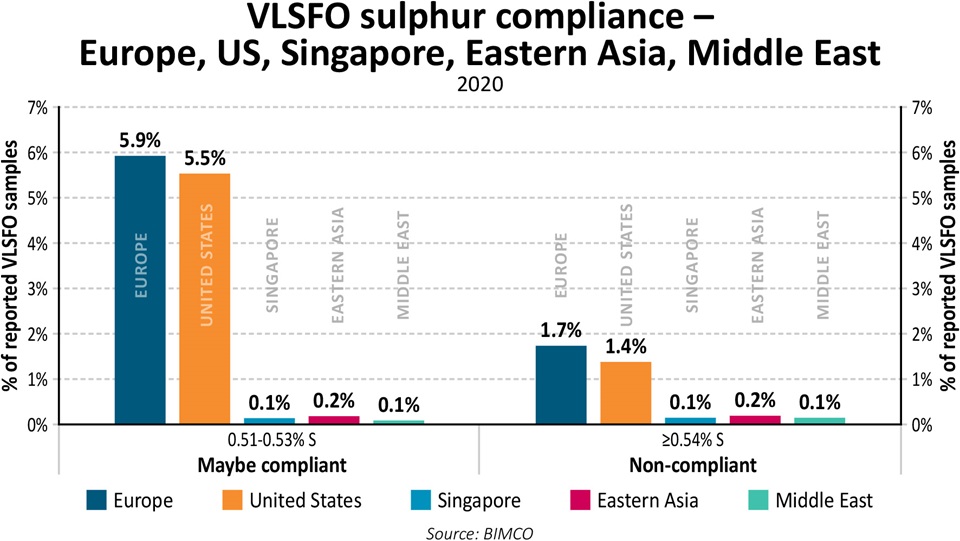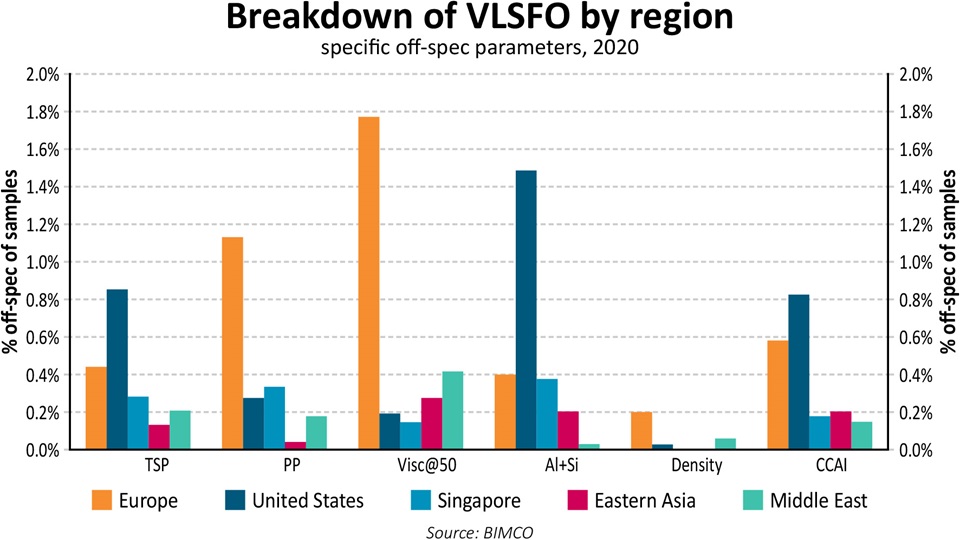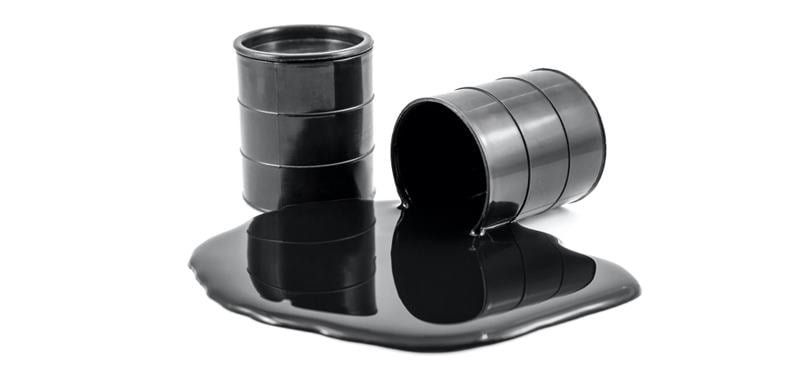BIMCO’s analysis shows significant geographical differences when it comes to VLSFO sulphur compliance and ISO 8217 quality problems
BIMCO, together with the other industry organisations, acquired data on all commercial fuel samples tested by Veritas Petroleum Services (VPS) during 2020.
This VPS data clearly shows the geographical differences between the standard of the fuels delivered to ships. Europe and the US seem to have the poorest performance. This is both in relation to sulphur compliance which may lead to increased air pollution, and ISO 8217 quality parameters, which may impact the safety of ships.
BIMCO is providing IMO with data on very low sulphur fuel oil (VLSFO) sulphur compliance and ISO 8217 fuel quality problems. The submissions include an invitation to countries to consider implementing and enforcing a licensing scheme for bunker suppliers operating within their jurisdiction. Such a measure should help combat the high level of problems in some of the poorer performing geographical regions.
Sulphur compliance is problematic in Europe and the US
The data clearly shows that there are significant problems with the sulphur content of VLSFO in Europe and the US. More than 5.5% of the samples are categorised as only being ‘maybe compliant’, while roughly 1.5% of the samples in Europe and the US are non-compliant. In total, around 7% of the samples had sulphur content which could potentially be non-compliant.
7% may not seem significant but compared to Singapore, Eastern Asia and the Middle East, it is problematic. In these three regions, the samples that are ‘maybe compliant’ or ‘non-compliant’ only total between 0.2 and 0.4%.

The submission to the IMO also focusses on the increase in the problems in specific areas – Amsterdam, Rotterdam and Antwerp, as well as the US East Coast where the figures are even higher.
ISO 8217 fuel quality problems are significantly higher in Europe and the US which may potentially lead to engine problems for a ship
In Europe particularly, viscosity (Visc@50) and pour point (PP) temperature were problematic for VLSFO. In the USA, it was the parameters of cat fines (Al+Si), total sediment potential (TSP) and calculated carbon aromaticity index (CCAI) that was mainly found as being off-specifications (off-spec).
Off-spec means that the fuel does not meet one or more of the 14 quality parameters specified in the international standard for marine fuels (ISO 8217). Fuels that do not meet the specifications of ISO 8217 risk jeopardising the safety of ships as there is a risk, it could lead to unacceptable loss of power and propulsion.
Fuel with off-spec viscosity reduces the ability of the ship’s separators to remove water and solids from the fuel during onboard treatment prior to being used in the engines. It is crucial that the viscosity is within the agreed specifications as the ship relies on the fuel being compatible with the engine and equipment manufacturers’ specifications to avoid poor combustion and deposit formation, which may lead to engine damage.
Fuel with off-spec pour point temperature risks being unpumpable and may even solidify in the ship’s tanks. A fuel that has solidified needs to be manually removed from the tank.
Cat fines are microscopic particles consisting of aluminium and silicon (Al+Si) that originate from the refinery process. Excessive levels of cat fines pose a risk to ships as they can cause accelerated wear of engines.
A fuel with off-spec TSP value indicates that an unacceptable amount of sediment is likely to form in the ship’s fuel tanks and the fuel may even be unstable. A ship using unstable fuel risks clogged filters and pipes leading to loss of power and/or propulsion, and ultimately even engine damage in extreme cases.
An off-spec CCAI indicates poor ignition quality of the fuel, which may lead to engine damage in severe cases.

In Europe 22% of high sulphur fuel oil (HSFO) were off-spec on one or more ISO 8217 fuel quality parameters, whereas in Singapore, Eastern Asia and Middle East the off-spec rates for HSFO were only between 3 and 6%.
In Europe 5% of VLSFO were off-spec, whereas in Singapore, Eastern Asia and Middle East the off-spec rates for VLSFO were only between 2 and 3%.
Within the four sulphur emission control areas (Baltic Sea, North Sea, North American area, US Caribbean Sea area) ships are using ultra low sulphur fuel oil (ULSFO). However, 12% of ULSFO provided in Europe were off-spec, and 4% provided in the US were off-spec.
Solution
The IMO is working on how best to address issues with ISO 8217 quality parameters thus enhancing the safety of ships relating to the use of fuel. At BIMCO, we believe the best solution would be to introduce a licensing scheme for bunker suppliers – similar to the approach taken by Singapore. We hope that these submissions to IMO will lead to enhanced focus and action in the control of fuel prior to bunkering.
Source BIMCO

